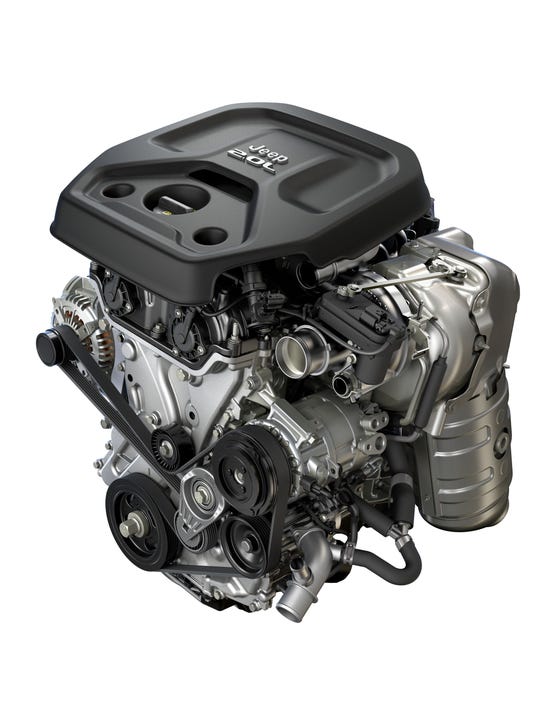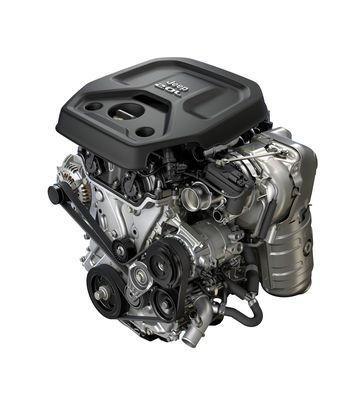
Fiat Chrysler Automobiles is producing a new turbocharged 4-cylinder engine in Trenton, Mich.(Photo: Fiat Chrysler Automobiles)
Is Fiat Chrysler building a future-proof engine?
The new 2.0-liter inline turbocharged 4-cylinder engine now being built at the company’s Trenton Engine Complex could be close, according to one expert, who notes its adaptability.
“It’s almost future proof,” said Bill Visnic, editorial director at the Society of Automotive Engineers. “It could literally be used almost anywhere throughout the lineup.”
Bob Lee, head of Powertrain Coordination for Fiat Chrysler Automobiles, won’t go quite so far as Visnic, but said that what the company calls its Global Medium Engine, which is also built in Italy, will be produced for the long haul.
“We definitely engineered the product to have a significant number of technologies that can be applied or applied in combination,” Lee said. “We clearly have an eye on this being around for many, many years.”
Read more:
Mack Avenue Engine Plant gets Fiat Chrysler’s silver designation for production efforts
2019 Jeep Cherokee: A sneak peek of the new SUV
Mopar opens $10M center in Romulus, expected to create 100 jobs
That is good news for workers at the plant.
While it’s not clear if any new jobs will result from the $74.7 million investment FCA announced in 2016 to retool Trenton’s north plant for production of the engine, the automaker, which has its U.S. headquarters in Auburn Hills, committed to retain 245 jobs as part of its planning. The Trenton plant employs 1,600 people.
Ultimately, securing a new engine offering can help ensure a particular plant has relevance for years because of the commitment it signals. In the case of this new engine, Lee estimated development time of about 3½ years.
Of course, getting the engine right is key.
Visnic experienced the Global Medium Engine in the new Jeep Wrangler, a vehicle unveiled in November at the Los Angeles Auto Show, and called it “fantastic.” The new engine in Trenton has not yet made it into vehicles in the hands of consumers, so the 4-cylinder turbo engines made for the new Wrangler are sourced from the company’s plant in Termoli, Italy. Although there’s no word on whether that production could shift to Trenton, the company clearly has big plans for the engine even if it has not yet announced which vehicles it will end up in.
The company says that production of the new engine in Trenton is still ramping up.
With a new 4-cylinder engine available, it might be natural to wonder about the fate of the 4-cylinder Tigershark engine produced at Dundee.
But both Lee and Visnic indicated the future should at least be stable production-wise for the naturally aspirated Tigershark engine. The main technical difference is the turbocharger in the new engine, which forces more air into the combustion process than what a naturally aspirated engine can accomplish on its own.
The new engine gives Fiat Chrysler more performance options even as it tries to meet tightening regulatory requirements, something crucial, Visnic noted, for off-roading in vehicles like the Wrangler.
Turbo-charged 4 cylinders “easily make V-6 power that gives you more like 4-cylinder fuel economy,” Visnic said.
The Tigershark, he said, is perfectly adequate in many cases, but that falls short when customers demand performance and good fuel economy. The new Wrangler promises 270 horsepower with the 2.0-liter 4-cylinder, which is substantially more than the Tigershark’s 180 horsepower, for example.
“Jeep, in particular, really needed a 4-cylinder with some punch to it,” Visnic said.
That does not necessarily mean the end for the Tigershark, which dates to the 2013 model year, because of the need for a range of engines.
“The good news about our situation is that we have needs for a lot of engines, and all of our plants feel pretty good right now,” Lee said in response to questions about the fate of the Tigershark.
What could feel the squeeze from a turbo 4-cylinder engine are V-6 engines, such as FCA’s Pentastar, but Lee dismissed the possibility that FCA would stop making V-6s, calling them cost-effective and saying that they offer yet another option for the automaker.
Brian Maxim, vice president of global powertrain forecasting at AutoForecast Solutions, noted that the “big wild card” for engine development is fuel economy regulations, which are currently under review for 2022 to 2025.
“Things can change quite a bit as we get closer to that. Right now, it seems that FCA is hedging its bets, so some change would be expected as we get closer to that time frame. Which way things (go) will depend on what happens with the Trump administration’s influence on those rules,” Maxim said.
Maxim suggested that FCA is playing catchup to other automakers because turbocharged 4- cylinders are already in wide use. Lee, however, said that misses the fact that the company’s efforts to tackle fuel efficiency previously focused on higher-speed transmissions, which has now become a focus for other automakers.
Contact Eric D. Lawrence: elawrence@freepress.com. Follow him on Twitter: @_ericdlawrence. Mark Phelan contributed to this report.
Read or Share this story: http://on.freep.com/2Flk2yT
